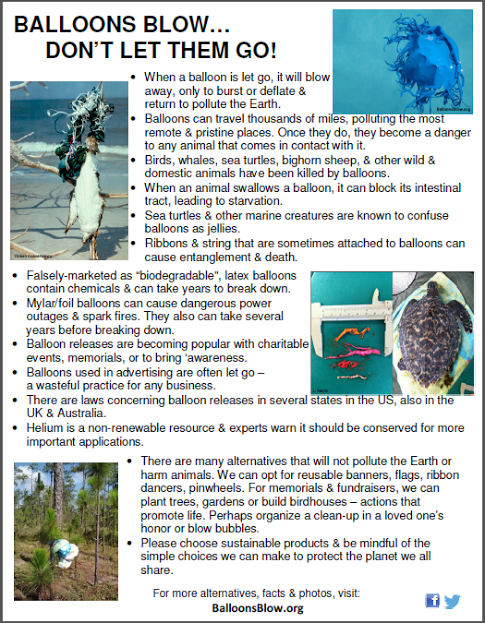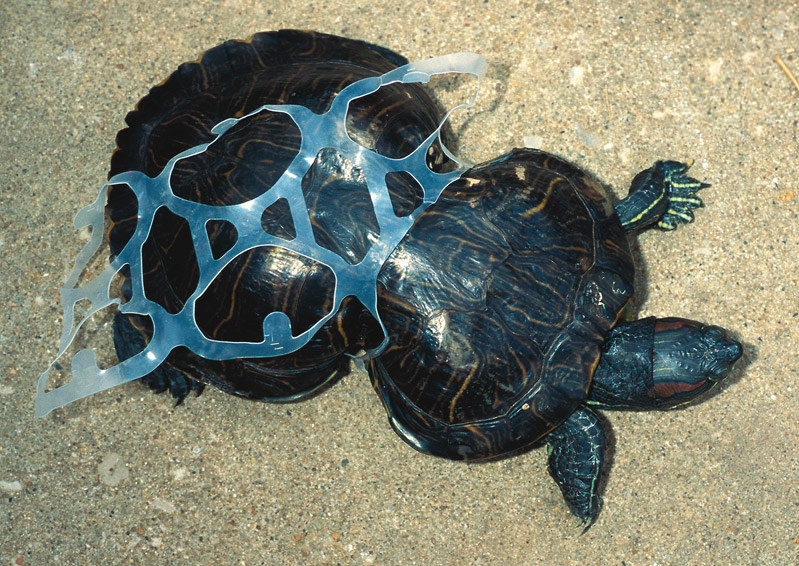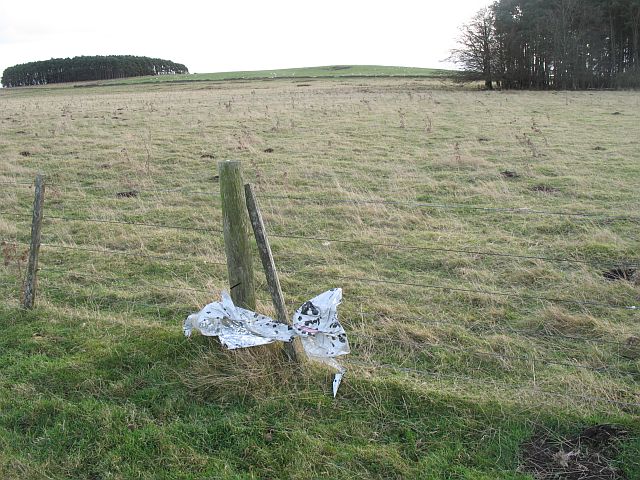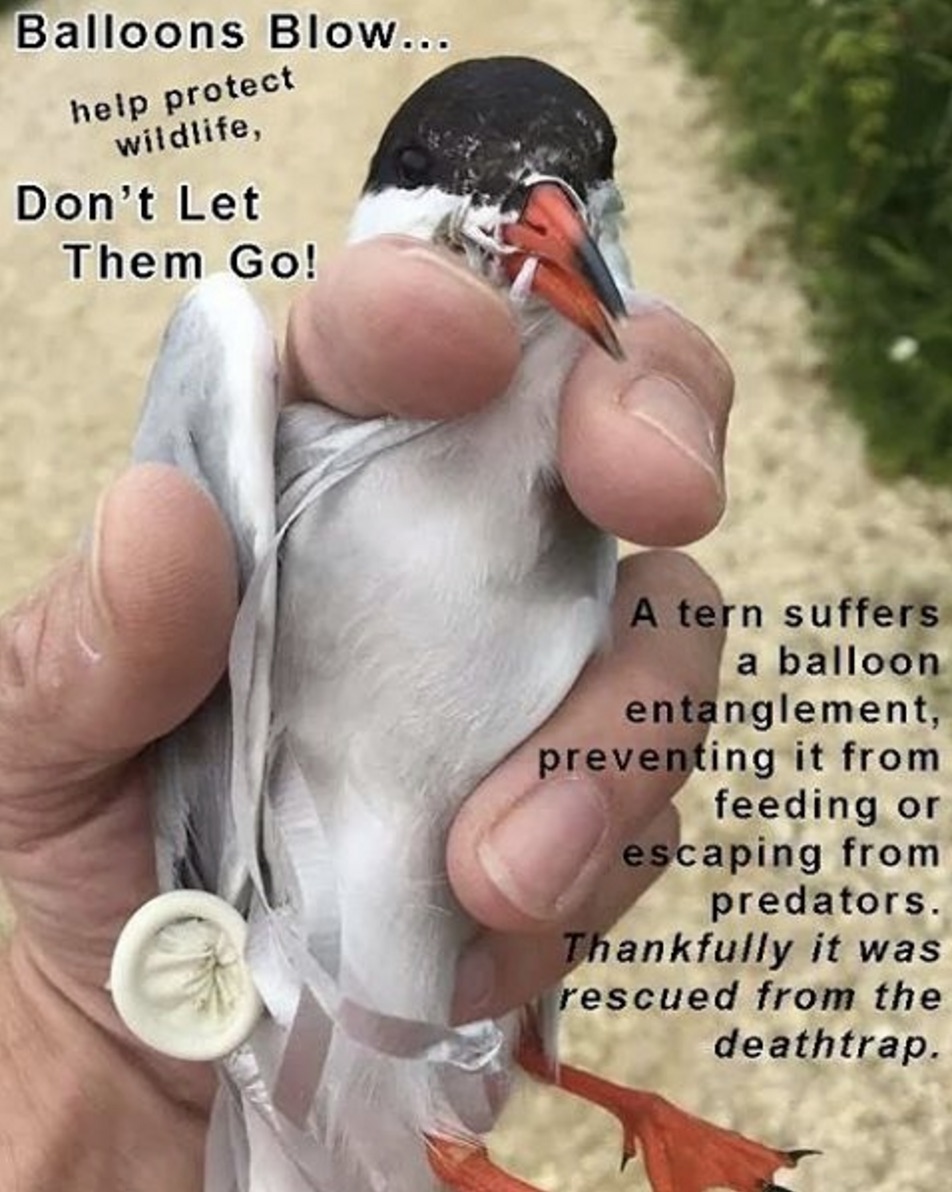Almost everyone has released a balloon into the air at some point in their life.
Whether it was intentional or accidental, we've all let go of that colorful plastic ribbon and watched the balloon float away.
Usually, little kids are the ones whose fingers let balloons slip through, and although you shouldn't get angry at them for accidentally releasing balloons, you definitely shouldn't encourage it.
You probably haven't thought much about what happens to the balloon after you can't see it anymore — after all, out of sight out of mind — but you need to start thinking about it.
You may not realize it, but releasing balloons into the air is extremely harmful to the environment, especially animals.
Balloons Blow, an organization that "provides information to educate people about the destructive effects released balloons have on animals, people, and the environment, and strives to inspire and promote an eco-conscious lifestyle," recently posted a photo guide explaining why you should never release balloons.

On March 29, 2017, the Balloons Blow Facebook page posted the above photo, trying to convince Cullman County, Alabama, to not permit intentional balloon releases.
The photo explained, "Balloons can travel thousands of miles, polluting the most remote & pristine places. Once they do, they become a danger to any animal that comes in contact with it."

Many animals can't tell the difference between food and litter, so they may accidentally ingest items that could hurt them.
"When an animal swallows a balloon, it can block its intestinal tract, leading to starvation," explains the photo.
"Sea turtles & other marine creatures are known to confuse balloons as jellies. Ribbons & string that are sometimes attached to balloons can cause entanglement & death."

Once they've deflated or popped, and have been bleached by the sun, balloons in the ocean look exactly like jellyfish — a primary food source for sea turtles.
The turtles ingest the deflated balloons, which can cause severe harm to their bodies, and eventual death.

While releasing balloons might not seem like polluting, it's no better than throwing trash into our oceans and across our forests.
It's posing serious risks to the wildlife we share the planet with.

Even balloons that claim they are biodegradable still often take years to break down, and they may release chemicals into the environment as they do.
Latex balloons primarily affect animals, but "mylar/foil balloons can cause dangerous power outages & spark fires."

You may be wondering how we can solve this balloon problem.
First of all, you can make sure not to release your own balloons when you have them.
Second, you can encourage businesses to not host balloon releases.
There are lots of great alternatives, including bubbles, flags, and banners.
If you want to help the environment even more, plant gardens or trees for uplifting events.

After learning about this, I know I'll definitely hold onto my balloons a little tighter in the future.
If you think we should always protect the animals, please SHARE this article with your friends and family!




